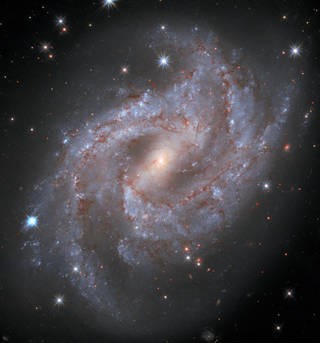
The National Aeronautics and Space Administration (NASA) recently released a photo time-lapse of a star 70 million light-years away that went into a supernova, using the Hubble Space Telescope, capturing its conclusion and blazing farewell. The Hubble Space Telescope's documentation of the dying star recorded the star's bright and final moments, giving justice to its life cycle.
NASA's Hubble Telescope went 70 million light-years away to monitor, see, and capture the dying star, NGC-2525's ultimate demise before plunging into the endless void in space. The phenomenon brought by the star is stronger than the Solar System's Sun and its energy over billions of years.
According to NASA's press release, the Hubble Telescope watched the star's explosion, from being seen from the Earth, zooming into 70 million light-years away, and receiving a massive 'wink' before fading out. The scientists monitored the star for a year, since 2018, down to its eventual explosion in 2019.
NASA recently released a video compilation of the time-lapse capturing the supernova with Hubble. Supernova is the star's end of cycle process which explodes into massive particles bring potent elements to the celestial heavens. These elements are now essential to giving birth to stars, planets, and universes forming itself from the 'ashes' of the fallen ball of gas.
NGC-2525 is a star just outside the galaxy's outskirts, hiding out among the various star systems and planets that surround it. The stellar blast is like a 'movie' scene that shows the majestic lights and sparkles brought by the supernova. However, NASA's latest release is the real deal and intricately shows the step-by-step happenings of a star's supernova.
ALSO READ: Elon Musk Notes Wind and Solar Energy is Cheaper than Sending a Big Fusion Reactor in the Sky
NASA'S Hubble Telescope: Intergalactic Paparazzi
According to NASA's very own press release, The Hubble Telescope can be compared to an 'intergalactic paparazzi' who documented every bit of the star's discovery and eventual explosion in 2019. The supernova is a justifying moment in a star's life that gives it a new purpose, instead of decaying itself in the vast oblivion.
NGC-2525 was famously discovered by an amateur astronomer, Koichi Itagaki, a Japanese entrepreneur who has fascination over the heavenly bodies in the cosmic space. Back in mid-January 2018, Itagaki saw the star's glittering appearance that is different from those surrounding it.
Initially, it was referred to as the SN 2018gv, where NASA's Hubble began observing it in February 2018. The star appears to be a blazing object in its early discovery, outshining those surrounding and within proximity. During its supernova, NGC-2525 outshined almost all the brightest stars in the galaxy before fading to extinction.
NGC-2525: White Dwarf Star Who Bid Farewell
The 'intergalactic paparazzi' Hubble, witnessed the glamorous exit of the dying star, NGC-2525, who is considered to be a White Dwarf. The star's supernova sequence originated from its 'burnt-out' characteristics that indicate its end.
White Dwarf stars reach a critical mass once it is burned out. This state will lead the star's core to become hot enough and ignite a nuclear fusion within and turning the star into a massive atomic bomb. The process is a thermonuclear one, which leads to tearing the star apart.
This article is owned by Tech Times
Written by Isaiah Alonzo
ⓒ 2025 TECHTIMES.com All rights reserved. Do not reproduce without permission.




